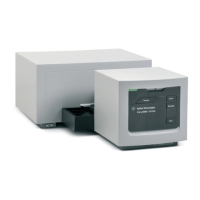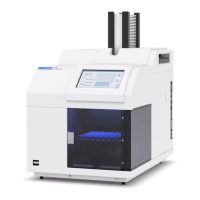140 Understanding Your Agilent ChemStation
6 Peak Identification
The Identification Process
Finding the Remaining Calibrated Peaks
The third pass identifies all remaining peaks listed in the calibration table.
The non-reference peaks in the calibration table are matched to the remaining
run peaks by using their RT window.
Each non-reference calibrated peak has its own retention/migration time in
the calibration table. This is adjusted for the particular run based on the
pre-identification of the time reference peaks. The retention/migration time
window of the calibrated peak is adjusted based on the corrected
retention/migration time of the calibrated peak.
If more than one peak is found in the same window, the peak with a
retention/migration time which is closest to the expected retention/migration
time and also meets the optional qualifier specifications is chosen.
Classification of Unidentified Peaks
If there are remaining peaks, which are still not identified, they are classified
as unknown. The ChemStation attempts to group the unknown peaks that
belong to the same compound. If a peak has been detected in more than one
signal, the peaks with the same retention/migration time in each signal are
grouped to one compound.
Unknown peaks are reported if the corresponding selection has been made in
the Calibration Settings dialog box.

